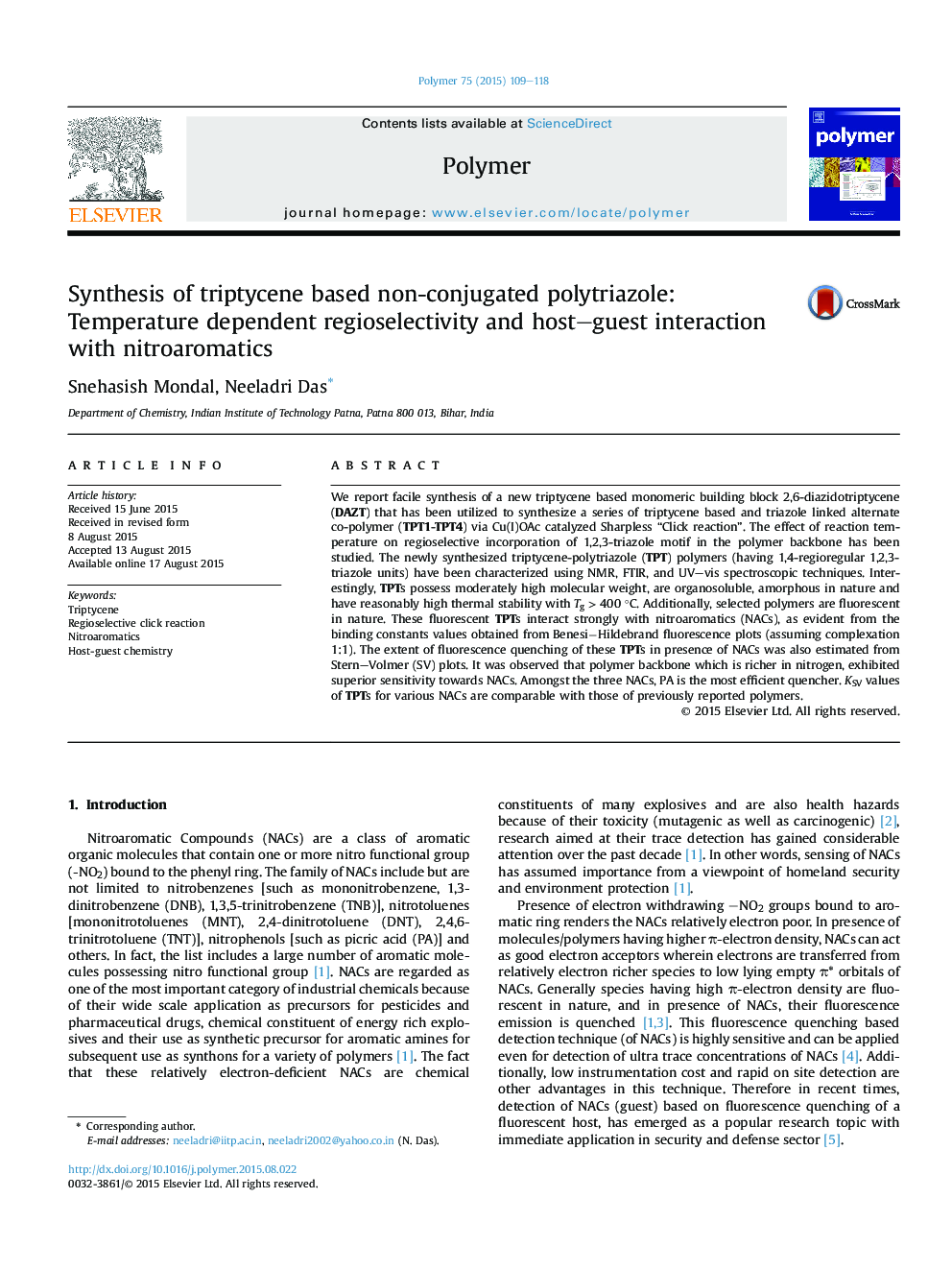| Article ID | Journal | Published Year | Pages | File Type |
|---|---|---|---|---|
| 5180012 | Polymer | 2015 | 10 Pages |
â¢Synthesis of 2,6-diazidotriptycene: a new building block in triptycene polymer chemistry.â¢Polytriazole synthesis using Cu(I)OAc catalyzed “Click” reaction.â¢Temperature dependent regioselective incorporation of 1,2,3-triazole motif.â¢Strong host-guest interaction between polytriazole polymers and nitroaromatics.
We report facile synthesis of a new triptycene based monomeric building block 2,6-diazidotriptycene (DAZT) that has been utilized to synthesize a series of triptycene based and triazole linked alternate co-polymer (TPT1-TPT4) via Cu(I)OAc catalyzed Sharpless “Click reaction”. The effect of reaction temperature on regioselective incorporation of 1,2,3-triazole motif in the polymer backbone has been studied. The newly synthesized triptycene-polytriazole (TPT) polymers (having 1,4-regioregular 1,2,3-triazole units) have been characterized using NMR, FTIR, and UV-vis spectroscopic techniques. Interestingly, TPTs possess moderately high molecular weight, are organosoluble, amorphous in nature and have reasonably high thermal stability with Tg > 400 °C. Additionally, selected polymers are fluorescent in nature. These fluorescent TPTs interact strongly with nitroaromatics (NACs), as evident from the binding constants values obtained from BenesiâHildebrand fluorescence plots (assuming complexation 1:1). The extent of fluorescence quenching of these TPTs in presence of NACs was also estimated from Stern-Volmer (SV) plots. It was observed that polymer backbone which is richer in nitrogen, exhibited superior sensitivity towards NACs. Amongst the three NACs, PA is the most efficient quencher. KSV values of TPTs for various NACs are comparable with those of previously reported polymers.
Graphical abstractDownload high-res image (235KB)Download full-size image
